(2264 products available)















































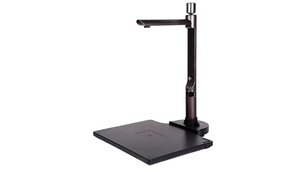






















































































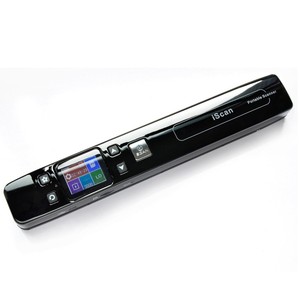
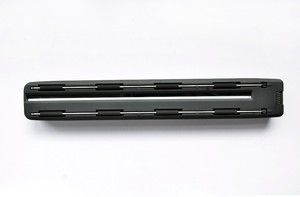

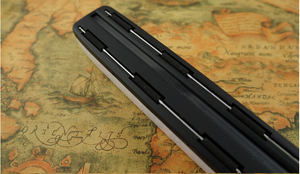
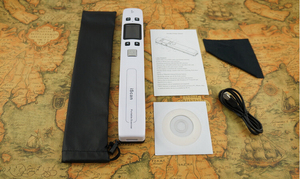
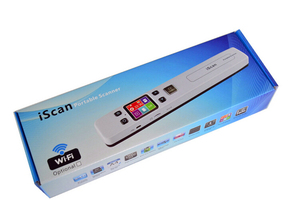































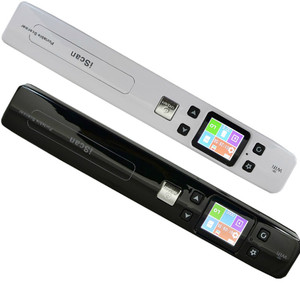








































The document scanner portable is a compact and handy tool that helps scan papers with ease. These scanners come in different types, each with unique perks that make scanning simple wherever one needs it.
High-resolution scanning:
For crisp and clear scans of both images and text, portable document scanners frequently include a high-resolution scanning capability (HD). A HD scanner can capture fine details and deliver scan results that are exact and simple to view and use, whether it's a photograph, art piece, or important paper.
OCR capability:
An essential feature of portable document scanners is Optical Character Recognition (OCR) technology, which transforms scanned text pictures into editable and searchable digital documents. OCR makes previously scanned PDFs or pictures accessible by allowing text extraction for further working with the content digitally, such as editing, searching, or translating.
Batch scanning:
To maximize efficiency and productivity, some scanners are equipped with a batch scanning capability that enables the simultaneous scanning of multiple documents. This feature is especially useful in situations where time is critical, such as large-scale digitization projects, administrative tasks, and information management processes.
Image enhancement:
A portable document scanner may offer features to improve scanned photographs' quality, such as distorting photo corrections, auto-brightness adjustments, or noise reduction. These capabilities contribute to producing high-quality scans by enhancing the readability and visual appeal of the digitized documents, even if the source materials are of mediocre quality or have imperfections.
Wireless connectivity:
Some document scanners can connect wirelessly to other devices, like computers, smartphones, and tablets, through Wi-Fi or Bluetooth. This capability allows users to transfer scanned documents immediately to these devices for additional processing, storage, and sharing without the need for tangled cords or physical connections.
Compact design:
Built for portability, which makes it easy to carry around and use anywhere, the portable document scanner features a compact design. This attribute usually includes small size and lightweight, enabling the scanner to fit into a bag or pocket and be taken anywhere, including on the go.
Battery-powered operation:
Document scanners are generally battery-powered to function without constant connectivity to a power source. This feature adds to the portability of the scanner, allowing users to operate it wherever needed, including areas without power outlets.
Simple user interface:
An easy-to-use interface helps users operate the scanner with less effort and accomplish scanning tasks quickly. This feature may include straightforward navigation, understandable buttons and icons, and visual cues that guide the user through the scanning process.
Scan-to-app functionality:
Scan-to-app functionality enables scanned documents to be sent directly to specific applications for further processing, storage, and sharing. This capability streamlines the workflow by allowing users to move scanned files immediately into the apps they use most, such as email, cloud storage, or document management systems.
In summary, the usage scenarios of portable document scanners are vast, ranging from businesses to personal use. These devices have become essential tools for efficiently capturing and digitizing documents, especially in an increasingly paperless world. Their impact on productivity, information management, and collaboration continues to grow across multiple industries.
Portable document scanners have revolutionized the way we capture and digitize documents. Their compact size, combined with high-quality scanning capabilities, has made them indispensable tools in various industries. The following are key applications for mini document scanners:
Whether working from a cramped office cubicle or conducting research in a remote location, the portable scanner is ideal for conveniently digitizing documents. It helps to save both space and time while staying organized. Scanners have multiple applications in various settings, keeping up with a fast-paced, digital-first world. Ultrasonic manufacturing technology enables reliable and precise document imaging, ensuring high-quality scanned files for further use.
When resellers are choosing a document scanner portable scanner for their target customers, they need to pick one that can meet their performance needs. They should know that portable scanners come with different scanning resolutions, which are measured in dot per inch (DPI). A scanner that has a higher DPI can create a more detailed and sharper digital image than one with a lower DPI. So, for documents with more text clarity, scanner owners and users can go for a scanner with at least 300 DPI. But, if their target users want to scan high-resolution images, they can choose a scanner that is more than 600 DPI.
Furthermore, different scanners can scan at various speeds to avoid time wastage when scanning long documents. A good portable document scanner speeds through the pages without compromising the image quality. Scanning speed is measured in pages per minute (PPM). Scanners that range between 15 and 30 PPM are generally acceptable for normal and fast scanning.
Also, document scanners come with various connectivity options. So, resellers should choose scanners that suit their customers' preferences. For example, some customers prefer to use USB cables to connect scanners to their computers, while others want more advanced wireless connectivity options like Wi-Fi and Bluetooth. Such connectivity options are mostly preferred because they allow users to transfer files to different devices without cable clutter.
Document scanners are designed to scan different paper sizes, from business cards and receipts to legal-sized documents. So, when selecting a portable document scanner, one needs to choose the right one that can scan the size of paper their customers frequently use. Some portable document scanners come with an automatic document feeder (ADF) pre-installed in their design. Such scanners automatically feed pages into the scanner for hands-free, sequential scanning. Moreover, the ADF scans double-sided documents in a single pass, which makes the scanning process quick and efficient.
Lastly, when choosing portable document scanners, one needs to select durable ones that are easy to use and maintain. The scanners should also be compatible with the operating systems users mainly work with.
Q: What resolution should I scan documents portable scanners at for good quality?
A: A resolution of 300 DPI (dots per inch) is generally sufficient for most purposes, such as email or archiving. If printing or editing images, consider using 600 DPI to provide better quality and more detail.
Q: How can I ensure that the scanned documents will be readable and not blurry?
A: Use a scanner with good optical quality and features like autofocus and image processing. Also, make sure to clean the scanner's lenses regularly and to hold the camera steady while scanning.
Q: Is it necessary to have a computer or Internet connection to use a portable scanner?
A: No, some handheld document scanners have built-in storage and a display, so documents can be scanned and saved without being connected to a computer. Others may require a cable connection to transfer scanned files.
Q: How often should the portable scanner be maintained?
A: Regular cleaning of the scanning lens and ensuring proper storage will keep the scanner in good condition. Check the user manual for any specific maintenance instructions for the model.